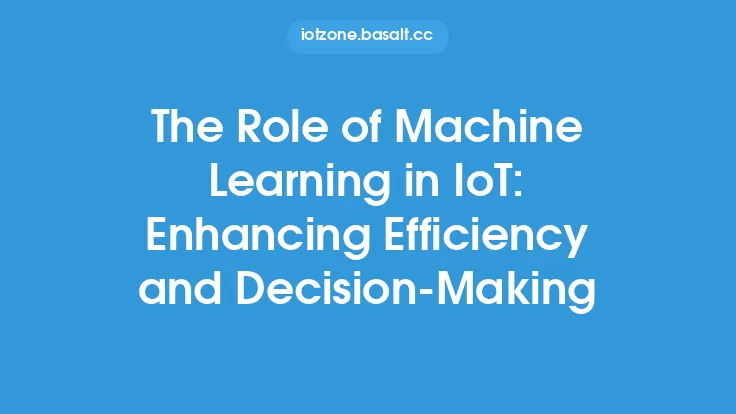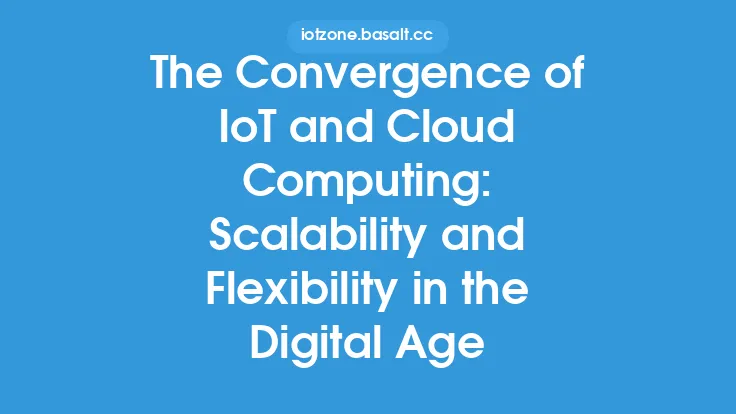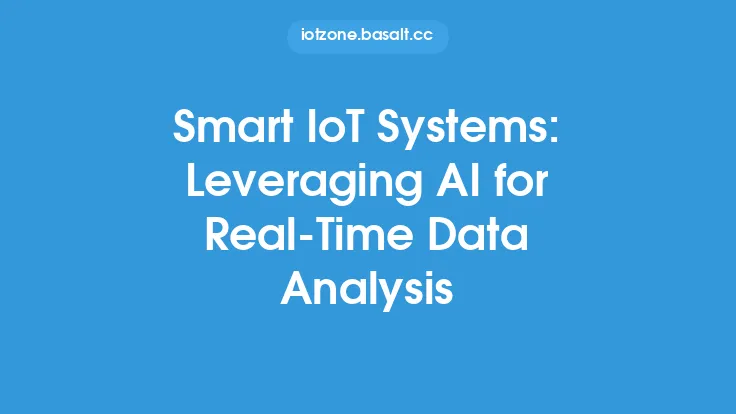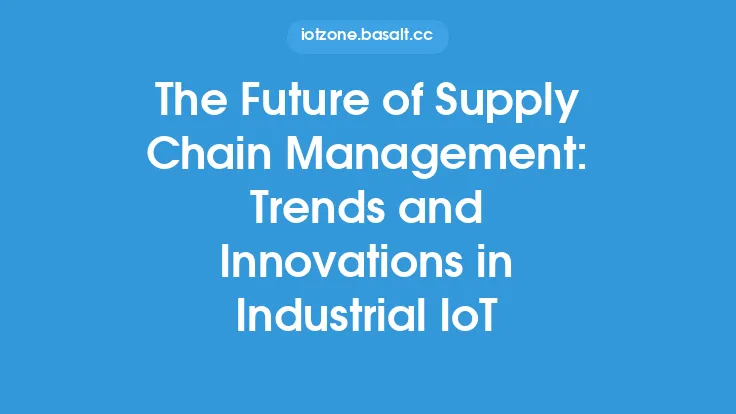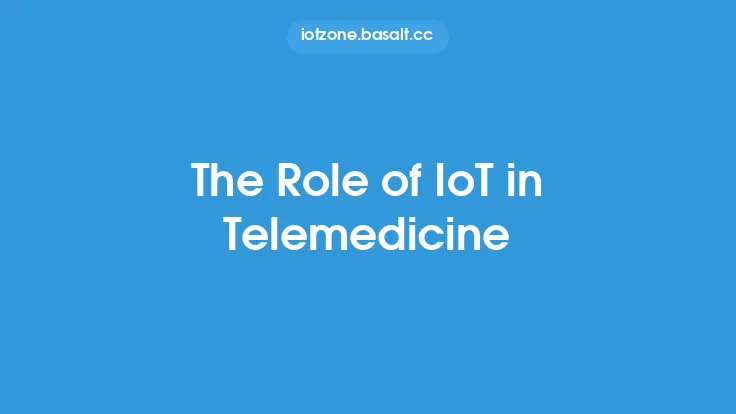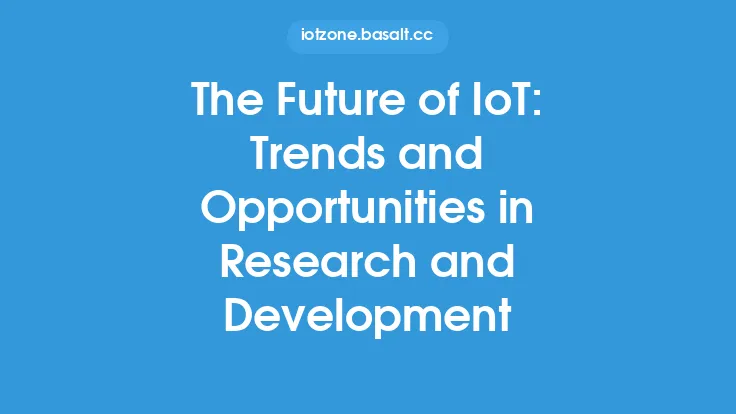The Internet of Things (IoT) has been rapidly expanding, with an increasing number of devices being connected to the internet. This has led to a massive amount of data being generated, which needs to be processed and analyzed in real-time. However, the traditional cloud-based approach to IoT data processing has several limitations, including latency, bandwidth, and security concerns. To address these challenges, edge computing has emerged as a promising solution, enabling real-time processing and analysis of IoT data at the edge of the network.
Introduction to Edge Computing
Edge computing refers to the processing and analysis of data at the edge of the network, i.e., closer to the source of the data. This approach reduces the latency and bandwidth requirements associated with transmitting data to the cloud or a central server for processing. Edge computing involves deploying computing resources, such as servers, storage, and networking equipment, at the edge of the network, enabling real-time processing and analysis of IoT data. This approach has several benefits, including improved performance, reduced latency, and enhanced security.
Key Benefits of Edge Computing in IoT
Edge computing offers several benefits in IoT applications, including:
- Reduced Latency: Edge computing enables real-time processing and analysis of IoT data, reducing the latency associated with transmitting data to the cloud or a central server.
- Improved Performance: By processing data closer to the source, edge computing improves the overall performance of IoT applications, enabling faster decision-making and action.
- Enhanced Security: Edge computing reduces the risk of data breaches and cyber-attacks by minimizing the amount of data transmitted to the cloud or a central server.
- Increased Efficiency: Edge computing enables more efficient use of bandwidth and network resources, reducing the costs associated with data transmission and storage.
Edge Computing Architecture
The edge computing architecture typically consists of several layers, including:
- Device Layer: This layer includes the IoT devices, such as sensors, actuators, and cameras, that generate data.
- Edge Layer: This layer includes the edge computing devices, such as gateways, routers, and servers, that process and analyze the data generated by the IoT devices.
- Cloud Layer: This layer includes the cloud-based infrastructure that stores and processes data that is not time-sensitive or requires more complex analysis.
- Application Layer: This layer includes the applications that use the data processed and analyzed by the edge computing devices.
Edge Computing Technologies
Several technologies are used to enable edge computing in IoT applications, including:
- Containerization: Containerization technologies, such as Docker, enable the deployment of applications and services at the edge of the network.
- Fog Computing: Fog computing is a distributed computing paradigm that extends the cloud computing model to the edge of the network.
- Edge Gateways: Edge gateways are specialized devices that connect IoT devices to the edge computing infrastructure, enabling data processing and analysis.
- Artificial Intelligence (AI) and Machine Learning (ML): AI and ML algorithms are used to analyze and process IoT data at the edge of the network, enabling real-time decision-making and action.
Real-World Applications of Edge Computing in IoT
Edge computing has several real-world applications in IoT, including:
- Industrial Automation: Edge computing is used in industrial automation to enable real-time monitoring and control of industrial equipment and processes.
- Smart Cities: Edge computing is used in smart cities to enable real-time monitoring and management of urban infrastructure, such as traffic management and energy grids.
- Healthcare: Edge computing is used in healthcare to enable real-time monitoring and analysis of patient data, such as vital signs and medical images.
- Transportation: Edge computing is used in transportation to enable real-time monitoring and management of vehicles and traffic flow.
Challenges and Limitations of Edge Computing in IoT
While edge computing offers several benefits in IoT applications, there are also several challenges and limitations, including:
- Security: Edge computing devices and data are vulnerable to cyber-attacks and data breaches.
- Management: Edge computing devices and infrastructure require specialized management and maintenance.
- Scalability: Edge computing infrastructure can be difficult to scale, particularly in large and complex IoT applications.
- Interoperability: Edge computing devices and infrastructure from different vendors may not be interoperable, making it difficult to integrate and manage edge computing systems.
Future of Edge Computing in IoT
The future of edge computing in IoT is promising, with several trends and technologies emerging, including:
- 5G Networks: The deployment of 5G networks will enable faster and more reliable communication between IoT devices and edge computing infrastructure.
- AI and ML: The use of AI and ML algorithms will become more prevalent in edge computing, enabling more sophisticated and real-time analysis of IoT data.
- Edge-Cloud Collaboration: The collaboration between edge computing and cloud computing will become more seamless, enabling more efficient and effective processing and analysis of IoT data.
- Autonomous Systems: The development of autonomous systems, such as self-driving cars and drones, will rely heavily on edge computing to enable real-time processing and analysis of IoT data.
